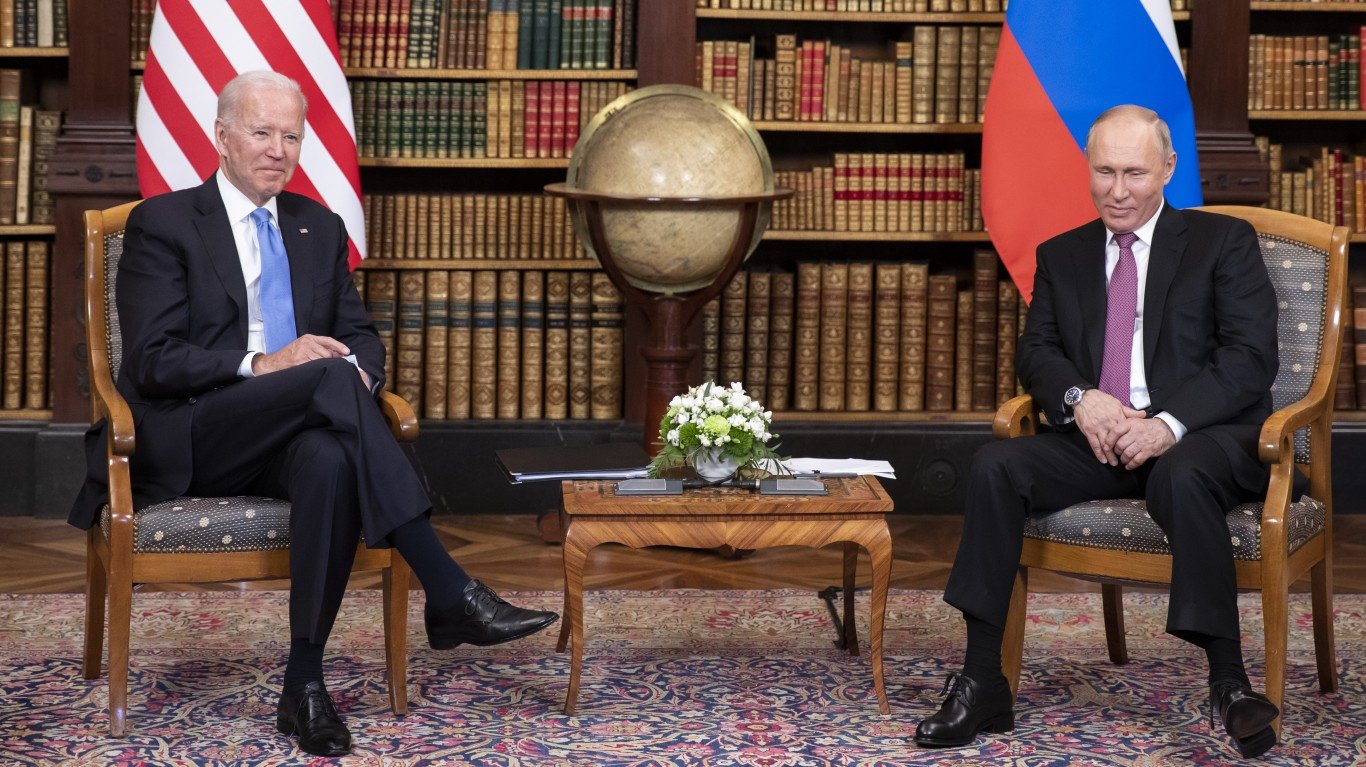
4. Continued global inflation
Economic stimulus and supply chain shocks during the COVID-19 pandemic, coupled with Russia’s invasion of Ukraine and the resulting economic sanctions, triggered a global inflation crisis in 2022, which will continue into 2023 and ultimately manifest as a protracted global recession, Eurasia Group estimates. Around the world, real incomes will erode and companies will report falling revenue in the coming year, the report forecasts.
Rising interest rates, the result of central banks raising rates to rein in inflation, will increase risks for emerging markets and could result in currency depreciation in much of the world, including some developed economies like the U.K. These conditions could also fuel political instability and pressure governments up for reelection this year in countries like Poland, Spain, and Turkey. It could also potentially lead to early elections in other countries.
3. AI’s disruptive potential
The last decade has been a period of technological disruption, largely stemming from the proliferation of social media. The world will enter the next era of disruptive technology in 2023, as a new form of artificial intelligence, known as generative AI, will further advance and disseminate among users. This technology will make it easier to create deepfakes and further advance facial recognition and voice synthesis. The result will likely be an increased spread of disinformation, easier manipulation of populations, and further political chaos, Eurasia Group predicts.
2023 will likely see an explosion of such content, pushing fake news stories, elevating fringe political candidates, and exacerbating extremism, inevitably resulting in further social discord and an erosion of democracy. The private sector could also suffer, as business leaders could be targeted, undermining investor confidence and triggering stock selloffs and public relations scandals.

2. Xi’s consolidation of power in China
Xi Jinping further consolidated power as president of China in 2022. With few remaining checks and balances in place – and virtually no dissenting voices in his government – Xi is China’s most powerful leader since Mao Zedong. With a single man controlling the government and much of the economy, the potential for mistakes is high, notes Eurasia Group, and in the most populous country in the world, any mistakes could have far-reaching consequences.
Ominous signs of trouble in the coming year are already apparent in China’s lack of transparency, its rapid militarization, volatile and arbitrary COVID-19 policies, and a “no limits friendship” with Russia. Additionally, a bleak global economic forecast does not bode well for the Chinese economy, which has been severely weakened in the wake of two years of its zero-COVID policy.

1. Growing tensions Between Russia and the U.S.
Russia’s largely unprovoked invasion of Ukraine in February 2022 marked the largest military mobilization in Europe since World War II – and fallout from the ongoing conflict poses the largest threat to geopolitical stability in the coming year. Since the invasion, Russia has been economically and diplomatically isolated from much of the developed world, and Putin’s prospects for a military victory are increasingly dim. These circumstances raise the likelihood that the Kremlin will resort to more extreme strategies to destabilize Europe and the U.S.
These strategies will likely include nuclear saber-rattling, backed by the world’s largest nuclear arsenal, Eurasia Group notes. Though it is unlikely Putin will use tactical nuclear warheads in 2023, the chances of an accident or miscalculation could raise the threat of nuclear war to the highest level since the Cuban Missile Crisis of 1962. Many suspect Russia may also sabotage vulnerable infrastructure, including continental gas pipelines and trans-Atlantic fiber cables, and intensify efforts to undermine American elections with disinformation and fomenting extremism.
According to the Eurasia Group, concerns that international support for Ukraine may be splintering are overblown. American military aid to Ukraine has continued with bi-partisan support, and despite the economic strain the war is bringing to Europe, the EU will continue to align with the U.S. and bolster the Ukrainian resistance, the Group forecasts.






